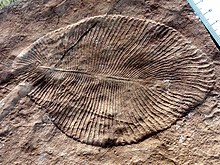
Back Kambrium Afrikaans Kambrium ALS العصر الكمبري Arabic Cambrianu AST Kembri dövrü Azerbaijani Кембрыйскі перыяд Byelorussian Кембр BE-X-OLD Камбрий Bulgarian Kambrium BJN ক্যামব্রিয়ান Bengali/Bangla



The Cambrian is the first geological period of the Palaeozoic era and the Phanerozoic eon. It lasted from 541 million years ago to 485.4 million years ago.[1] Before it came the Ediacaran, and after it the Ordovician.
Biologists have learnt quite a lot about the soft parts of Cambrian animals. This is because places have been found where soft parts of organisms are preserved as well as their more resistant shells. This means our understanding of the Cambrian biota is better than that of some later periods.
Life on Earth changed greatly during the Cambrian period. Before the Cambrian, life was mostly small and simple. Complex organisms (metazoa) evolved during the Proterozoic era. But during the Cambrian period, some organisms used carbonate minerals for shells, so they had hard parts which could become fossils. There were many different kinds of life during the Cambrian period. This increase in the diversity of lifeforms was relatively rapid, and is called the Cambrian explosion. This adaptive radiation produced the first members of the main groups of animals, called phyla.
Almost all of this new life was in the oceans. There was little life on land except a layer of microbes. There were shallow seas near several continents, because a supercontinent called Pannotia had broken into smaller pieces. The seas were warm, and there was no ice at the North and South Pole. Many animals with hard shells appeared for the first time during the beginning of the Cambrian.